- Home
- Tom Clancy
Airborne: A Guided Tour of an Airborne Task Force Page 15
Airborne: A Guided Tour of an Airborne Task Force Read online
Page 15
The M203 is a clever compromise, fitting a stubby pump-action 40mm grenade launcher under the barrel of a standard M16A2. One man in every four-man fire team is equipped with an M203. The grenade launcher adds only 3 1b/1.36 kg to the weight of the weapon. It consists of a hand guard and sight assembly with an adjustable sight, and an aluminum receiver which houses the barrel latch, barrel stop, and firing mechanism. The launcher fires a variety of low-velocity 40mm ammunition. These include high-explosive fragmentation, smoke, tear gas, and illumination rounds. Illumination grenades, which are fired at a high angle to deploy a dazzling magnesium flare on a miniature parachute, are particularly useful to the 82nd Airborne, which prefers to fight at night. Each illumination round is good for about a minute of fairly bright visibility. “Non-lethal” plastic and foam-rubber “beanbag” rounds have also been developed for riot control and peacekeeping. The launcher also has a quadrant sight which may be attached to the M16A2 carrying handle and used when precision is required at longer ranges. Maximum effective range against an area target is 1,150 feet/350 meters. Against a point target the practical range is about 490 feet/150 meters. The minimum safe range for combat is 100 feet/31 meters. This is an important weapon for the fire team, providing a base of heavy fire at the very head of an infantry assault.
M249 Squad Automatic Weapon. Late in World War I the German Army realized that the light machine gun, carried and operated by one man, was a key ingredient to a new, aggressive approach to small-unit tactics. The new tactics were based upon the seamless integration of infantry firepower and maneuver. This tactical doctrine was later refined and perfected in World War II, and the light machine gun that made it possible found its ultimate expression in the MG-42. This light machine gun was so good that the U.S. Army adopted it, with minor “improvements,” as the 7.62mm M60. The powerful 7.62mm round was also fired by the M14 rifle. Unfortunately, with the introduction of the M16 (which fired a 5.56mm round), the M14 was rendered obsolete.23 This left the Army without a “rifle caliber” combat rifle, and now required the carrying of two separate sizes of ammunition (5.56mm and 7.62mm) by U.S. rifle units. This was hardly a desirable situation, and efforts were begun to find a light machine gun that could use the same 5.56mm ammunition as the M16.
After many years of trials and experiments, the Army adopted a design called the FN Minimi, developed by the famed Belgian arsenal Fabrique National, as the M249 Squad Automatic Weapon (SAW). This gas-operated weapon weighs 16.31b/7.4 kg, measures 41 in/103 cm in length, and has an effective range of 800 meters/875 yards. The rate of fire is an awesome seven hundred to one thousand rounds per minute, but SAW gunners are trained to fire short bursts to conserve ammunition. The M249 is normally fired from a prone position, supported by folding bipod legs and the soldier’s shoulder. The SAW uses a two-hundred-round plastic box magazine (it weighs 6.91b/3.1 kg) for its disintegrating-link-belted ammunition, but can also accept standard thirty-round M16 magazines from the lower receiver. A hinged plate covers the belt-feeder when a magazine is inserted, or covers the magazine opening when the belt is loaded. The M249 is among the best light machine guns ever produced, and has proven popular among rifle units. In particular, they like having all the personal weapons in a fire team firing the same 5.56mm ball ammunition. Tested many times in combat, the SAW has always performed well.
Cutlery, Ammunition, Mines, and Grenades. Important as firearms are to a paratrooper, he would never go into action without an impressive collection of cutlery. The government-issued knives include a bayonet for the M16 rifle and a rigger’s knife. This last is a spring-loaded folding blade designed to cut away the shroud lines of a parachute in an emergency, such as a tree landing. In addition, a survival/combat knife is often worn in a scabbard strapped to one leg. Then there is the matter of personal knives and tools. While most paratroops still pack the traditional Swiss Army knife, something else is taking the place of other tools that might be needed in airborne operation. Rather than lugging around a box full of tools, most infantrymen are today carrying “multi-tools.” These are folding pliers that contain a number of other different and useful tools (screwdrivers, wire cutters, etc.). Various models made by Gerber and Leatherman are favored, and actually quite useful. Today’s airborne soldier also carries a folding entrenching tool with a sharpened blade that doubles as a nasty weapon in hand-to-hand combat. An improved Fighting Position Excavator (IPV-government for “shovel”) is under development. While all of this may seem excessive, try telling that to a young paratrooper jumping into a dark night, knowing nothing of what may be out there. Remember, these knives and tools may mean the difference between mission failure and success for an airborne trooper.
Along with all the cutlery, a paratrooper typically jumps with six M16 5.56mm ammunition magazines (loaded with thirty rounds each) and four M49 grenades (a mix of explosive-fragmentation, flash-bang, and smoke, depending on the mission). These are carried in a pair of pouches attached to the web gear. In addition, each trooper in a fire team not equipped with an M203 will usually carry an extra two-hundred-round M249 SAW magazine. If necessary, the SAW magazine can be broken down to reload empty M16 clips. For the M203-equipped trooper, there will likely be a stock of various types of 40mm grenades, depending upon the mission, threat level, and rules of engagement. Also towed away in the rucksack may be a claymore or other antipersonnel mine or a few rounds of 60mm mortar ammunition for the company’s heavy weapons platoon. Usually, the mortar rounds are dropped off in an assembly area, prior to the paratroops starting off to their objectives. All told, a U.S. paratrooper is probably carrying over 40 1b/18.1 kg of ammunition and weapons. It is a heavy load, but one that must be borne if the mission of the airborne is to be accomplished.
Sensors and Communications Gear. If there is any single area of military science that the United States leads the world in, it must be the use of advanced electronics to overcome night darkness and the general “fog of war.” The electronics revolution has even reached down to touch the individual paratrooper, as you will shortly see.
Two thousand years ago, our Roman legionary was lucky to see at night by the light of a few smoky torches around the perimeter of his camp, or by a tiny clay lamp inside his tent fueled by some of his precious olive oil ration. Today, every paratrooper carries a couple of personal flashlights (usually one in a pouch on his web gear and a spare in his rucksack). These are miniature “Maglites,” the same kind you can buy from any camping-supply mail-order catalog. In the field, though, they must be capped by a pack of red and yellow filter inserts. Red light is not normally visible to the enemy at long range, and it does not impair troops’normal night vision. Besides, if you show a white light at night around airborne troopers, you are likely to get shot—by them! However, today’s infantryman has a lot more than just a flashlight to see his way on the night battlefield.
Every four-man fire team will normally have one or two sets of Night Vision Goggles (NVGs). Optical devices of this type are sometimes called “starlight scopes.” Originally developed during World War II, starlight scopes for many years were “black” weapons, shrouded in secrecy and issued mainly to snipers and covert intelligence agents. During the Vietnam War first-generation scopes were mass-produced and widely issued to U.S. soldiers. The scope uses reflected moonlight or starlight at night and can amplify dim images up to fifty thousand times. Civilian hunters can now buy excellent night-vision goggles of this general type (made in Russia, no less!) for less than $800.
The most common U.S. model of NVG is the AN/PVS-7B, which is based on a third-generation image-intensifier tube, which amplifies even the smallest amount of available light from stars or moonlight. The AN/PVS- 7B represents the 1996 state of the art in NVGs, and is a significant improvement over earlier systems. The single-tube image intensifier uses prisms and lenses to provide the user with simulated binocular vision with no magnification. Through the dual displays (the NVGs are mounted either on a “Fritz” helmet or head harness) you see a gr
eenish, monochromatic view of the world without peripheral vision, so you have to scan continuously, left to right, up and down. It takes training and practice to move, search, and engage targets wearing NVGs, but the trouble they cause is worth the effort. A fast-acting “blooming” protection circuit prevents the user from being dazzled if a flare, vehicle headlights, or other bright light appears in the 40° circular field of view. In starlight (with no moon) a man-sized target can be spotted at around 100 meters/109.4 yards. In full moonlight that same man-sized target can be spotted at over 300 meters/328 yards, and vehicles out to 500 meters/547 yards. The AN/PVS-7B operates for up to twelve hours on a single battery, and weighs only 24 oz/.68 kg. Unit cost is about $6,000, and production is dual-sourced by ITT and Litton. Once a soldier is equipped with NVGs, there are other pieces of gear that can help him do his job.
Fitted to his weapon, the soldier may carry an AN/PAQ-4C Infrared Aiming Light, nicknamed the “death dot.” This is a lightweight (9 oz/.255 kg), low-cost, Helium-Neon infrared laser which is invisible to the naked eye. However, the infrared “death dot” shows up beautifully when wearing NVGs. Once the beam is boresighted to the weapon for a “point of aim/point of impact,” the firer simply places the pulsating spot on the target and shoots. This aiming light has been adapted for use with the M16 rifle, and can be fitted to the M60 machine gun, M2 heavy machine gun, or M249 SAW. Team leaders can also use the laser spot to designate targets or movement directions for their soldiers out to a maximum of 200 to 300 meters /219 to 328 yards, depending on the level of ambient light.
One other small but vital piece of night-vision equipment is the “chemlight.” This is a liquid-filled plastic stick that glows for up to twelve hours when crushed. They are used at night for silent signaling and marking positions. Chem-lights come in various colors (green, yellow, red, white, etc.), including one type that glows only in the infrared spectrum, visible only to night-vision devices such as NVGs and thermal sensors. All of these devices make American infantry the most capable night fighters in the world today. Because of advanced technology and a little Yankee ingenuity, our troops truly “own the night” on the battlefield.
Another area where advanced electronics are serving the paratrooper is communications. This represents a vast improvement over ancient times. Back in Roman days, every legion had a unit of trumpeters who stood by the commanding general to signal his orders down to the cohorts and maniples by blowing pre-established calls. Given the noise of battle, though, these were probably limited to “advance, withdraw, flank left, and flank right.” If a centurion in a tight spot needed to urgently request reinforcements, the only way to do it was to send a runner. Even better, two runners with the same message, by different paths, in case one took a javelin in the back. By the time of the American Civil War(1861 to 1865) the electric telegraph was beginning to influence events on the battlefield, but the technology of small-unit tactical communications did not change much until the U.S. Army introduced the handheld, battery operated “walkie-talkie” during World War II. Its range might have been only a few hundred yards/meters, but it was enough to allow a platoon leader to talk to his company commander, who himself had a radioman lugging a forty-pound transmitter-receiver set to pass the word up to the battalion headquarters. Strangely, today is little different from five decades ago.
Now, you might wonder why, in an age where every city cop has a two-pound “brick” radio on his belt (and every drug dealer has an even smaller cellular phone or pager in his pocket), every soldier doesn’t get a personal communications device. The answer is explained in just one word: security. Anything that transmits in the radio frequency spectrum can be located by an enemy. Even more dangerous is the fact that anything that can be located can be targeted and killed.
Modern tactical radios such as the U.S. Army’s “Single Channel Ground-Air Radio System” (SINCGARS)24 stay one jump ahead of this grim fact by complex techniques of “frequency hopping” and “spread spectrum” transmission. Since voice and data transmissions have to be “scrambled” or “encrypted,” there is an additional layer of administrative complexity for controlling and distributing the code keys. Even if the con-tentof the message is scrambled by encryption, the enemy can still extract useful information by analyzing the radio traffic pattern. Since we know this, our Signal units deploy special teams to generate bogus traffic, to confuse enemy analysts, and their Signal guys do the same thing, and so on. If this is giving you a headache, you’re beginning to understand the fundamentals of tactical communication. Since there are only a few usable tactical frequency bands, and a lot of people on both sides trying to talk at once, armies have developed rather rigid communications doctrines. This prevents mutual interference with detailed rules governing who can transmit what, where, when, and how.
For our paratroops, the smallest of the Army’s current SINCGARS tactical radios is the backpack-sized AN/PRC-119, which weighs 221b/10 kg. The -119 is an FM transceiver (i.e., the same unit can transmit and receive, but not simultaneously) operating in the VHF band (between 30 and 88 MHz), hopping among 2320 different frequencies! Five watts of radiated power give the unit a range of 2.5 to 5 mi/4 to 8 km, depending on terrain, weather, and other conditions. This is still a terribly heavy load for a soldier to carry, and additional work is going on to reduce the size of the SINCGARS units. Racal, Inc., has developed a SINCGARS radio (the PRC 6745 “Leprechaun”) that weighs only 3 1b/1.35 kg. Described as “ruggedized and immersible,” it sounds like a paratrooper’s dream. Radiated output is selectable from .5 to 5 watts, to conserve power and adjust the range. It has a jack that can connect to a satellite Global Positioning System (GPS) receiver, so that when you hit the PTT (“press-to-talk”) button, it automatically transmits your location over the radio net. You can plug the Leprechaun into your laptop computer, or power it from a vehicle adapter. When the Army finally buys such SINCGARS units, you can bet that the 82nd Airborne’s Signal Battalion will be next in line, right after the Special Forces guys get theirs.
There is one other type of sensor which commonly provides data to the paratroops: navigational instruments. These days, this means a miniature NAVISTAR GPS receiver. Today, at least one man in every infantry squad will have a Small Lightweight GPS Receiver (SLGR—called a “slugger” by the troops; it is produced by Trimble Navigation) or the newer AN/PSN-11 Portable Lightweight GPS Receiver (PLGR or “plugger,” which is built by Rockwell Collins) carefully stowed in his rucksack. The PLGR is a hand-held device about the size of a brick, weighing less than 3 1b/1.5 kg. It is a five-channel GPS receiver capable of Precision Code (“P” Code) and “Y” Code (encrypted P Code) reception. These tiny devices represent a truly revolutionary innovation. Knowing exactly where you are and where you want to go is a significant development in warfare, and in the human condition in general. This still does not guarantee that soldiers will not get lost. Troops will still have to develop their navigational skills to effectively use GPS as a field tool. However, as long as the supply of fresh batteries holds out, no American unit will ever have an excuse to be lost on the battlefield again. This is particularly critical in airborne assaults, where units may be scattered over a wide area.
An Air Force technician using a Trimble Small, Lightweight GPS Receiver (SLGR) to do a survey. Tens of thousands of these units, as well as the Rockwell Portable, Lightweight GPS Receiver (PLGR) are in service with military units of many nations around the world.
OFFICIAL U.S. AIR FORCE PHOTO
VIA TRIMBLE NAVIGATION
The PLGR and SLGR receive data from a constellation of twenty-four GPS satellites and display your exact three-dimensional location in military coordinates, or latitude and longitude, anywhere on earth. How “exact” is considered sensitive information, but published sources indicate that the encoded “PY” signal is accurate within 3 meters/10 feet. As an added bonus, PLGR also displays the time, accurate within microseconds. During Desert Storm the GPS signal was particularly hard to jam, and it wi
ll be many years before any likely opponent deploys an anti-GPS satellite weapon. One feature of the GPS system, called “selective availability,” can be activated in wartime or during a crisis by Air Force ground controllers to degrade the accuracy of the GPS signal for all users who do not have a military GPS receiver. Unless the receiver is primed with the proper daily “Y code” key, the receiver will not generate accurate positional data. However, the National Command Authorities have never seen fit to activate “selective availability,” and hopefully never will. GPS has become too valuable a public service (some think of it as a new kind of public utility) for any sort of extended disruption to be tolerated for long. Civilian applications are growing exponentially in number every year, and GPS will soon be the air navigational system for the world in just a few years. You can even buy a GPS receiver for yourself. Today, sophisticated miniaturized GPS receivers like the Trimble Scout can be mail-ordered for about $500.
Last but not least, there are a couple of other items commonly used by paratroops to navigate their way around the battlefield. Even in the age of satellite navigation systems, a combat soldier still needs a map and compass. For one thing, GPS receivers don’t work well in built-up areas, or in deep ravines where you cannot see a wide expanse of sky. The standard-issue Army magnetic compass weighs 5 oz/.14 kg, and comes in a nylon case that clips to your web gear. The pointer glows in complete darkness, thanks to a tiny amount of radioactive tritium. Many troopers prefer a commercial magnetic compass (like the fluid-filled models made by Silva) with more features that assist in map reading. This matter of maps is worth a short discussion as well.
Today, American soldiers are privileged to have a vast avalanche of mapping and photographic data available for their use. Under the newly formed (as of October 1st, 1996) National Imaging and Mapping Agency (NIMA), maps of every scale and detail level are being produced for use in the field. Drawn directly from satellite photos, these maps provide the ground soldier with an unparalleled level of situational awareness. Today, when the 82nd Airborne Division deploys overseas, it takes along literally tons of such documents for use by troopers down to the fire-team level. Down at the trooper level, there is an almost artistic skill to cutting the maps and pasting them into small, easily stowed packages for use in the field. Folding plastic map cases are seen in abundance, and map skills are essential for any sort of understanding of events on the modern battlefield. Luckily, the United States has done an admirable job of supplying its soldiers with the finest such maps and navigational tools in the history of warfare.

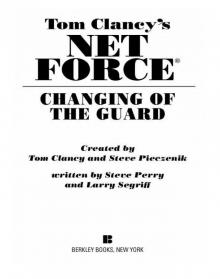 Changing of the Guard
Changing of the Guard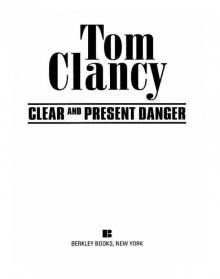 Clear and Present Danger
Clear and Present Danger Hounds of Rome
Hounds of Rome Breaking Point
Breaking Point Tom Clancy's Jack Ryan Books 7-12
Tom Clancy's Jack Ryan Books 7-12 Full Force and Effect
Full Force and Effect The Archimedes Effect
The Archimedes Effect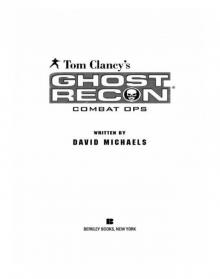 Combat Ops
Combat Ops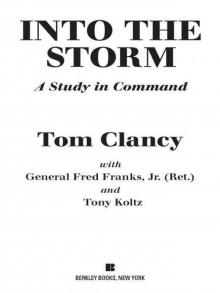 Into the Storm: On the Ground in Iraq
Into the Storm: On the Ground in Iraq Under Fire
Under Fire Point of Impact
Point of Impact Red Rabbit
Red Rabbit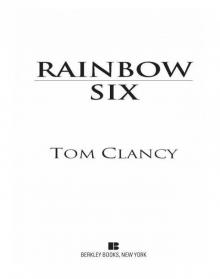 Rainbow Six
Rainbow Six The Hunt for Red October
The Hunt for Red October The Teeth of the Tiger
The Teeth of the Tiger Conviction (2009)
Conviction (2009) Battle Ready
Battle Ready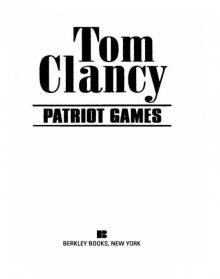 Patriot Games
Patriot Games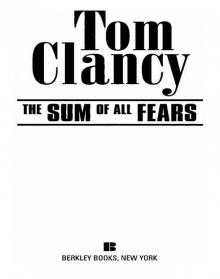 The Sum of All Fears
The Sum of All Fears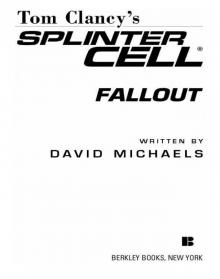 Fallout (2007)
Fallout (2007) Red Storm Rising
Red Storm Rising The Cardinal of the Kremlin
The Cardinal of the Kremlin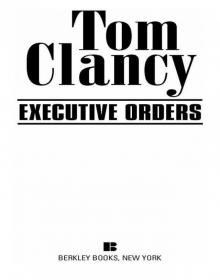 Executive Orders
Executive Orders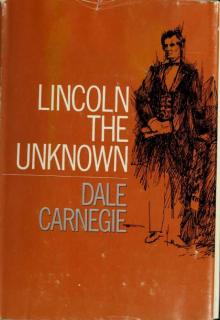 Lincoln, the unknown
Lincoln, the unknown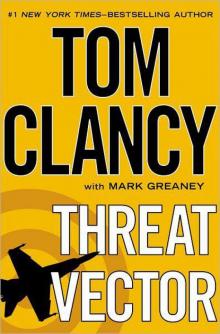 Threat Vector
Threat Vector The Hunted
The Hunted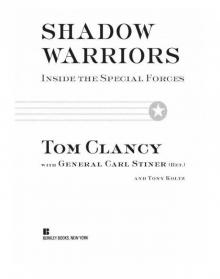 Shadow Warriors: Inside the Special Forces
Shadow Warriors: Inside the Special Forces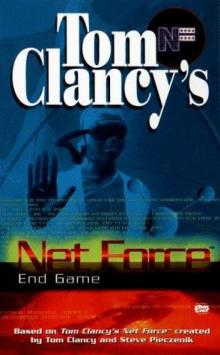 End Game
End Game Special Forces: A Guided Tour of U.S. Army Special Forces
Special Forces: A Guided Tour of U.S. Army Special Forces Locked On
Locked On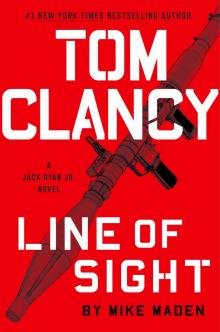 Line of Sight
Line of Sight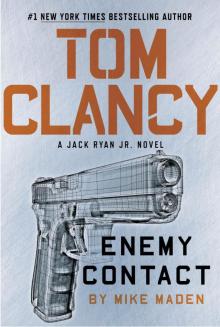 Tom Clancy Enemy Contact - Mike Maden
Tom Clancy Enemy Contact - Mike Maden Fighter Wing: A Guided Tour of an Air Force Combat Wing
Fighter Wing: A Guided Tour of an Air Force Combat Wing Springboard
Springboard Line of Sight - Mike Maden
Line of Sight - Mike Maden EndWar
EndWar Dead or Alive
Dead or Alive Tom Clancy Support and Defend
Tom Clancy Support and Defend Checkmate
Checkmate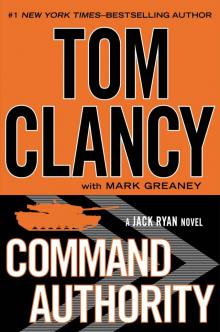 Command Authority
Command Authority Carrier: A Guided Tour of an Aircraft Carrier
Carrier: A Guided Tour of an Aircraft Carrier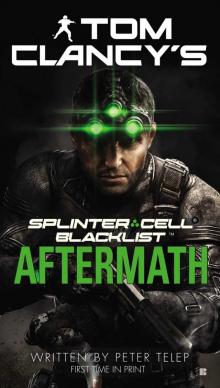 Blacklist Aftermath
Blacklist Aftermath Marine: A Guided Tour of a Marine Expeditionary Unit
Marine: A Guided Tour of a Marine Expeditionary Unit Commander-In-Chief
Commander-In-Chief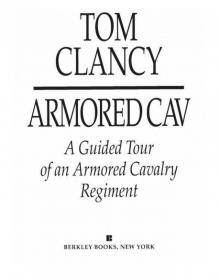 Armored Cav: A Guided Tour of an Armored Cavalry Regiment
Armored Cav: A Guided Tour of an Armored Cavalry Regiment Tom Clancy's Jack Ryan Books 1-6
Tom Clancy's Jack Ryan Books 1-6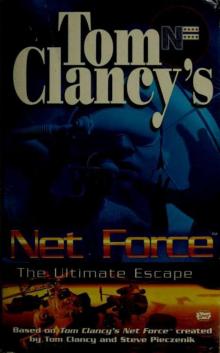 The Ultimate Escape
The Ultimate Escape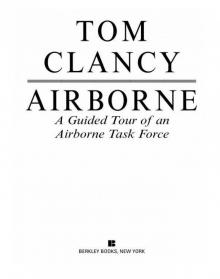 Airborne: A Guided Tour of an Airborne Task Force
Airborne: A Guided Tour of an Airborne Task Force Debt of Honor
Debt of Honor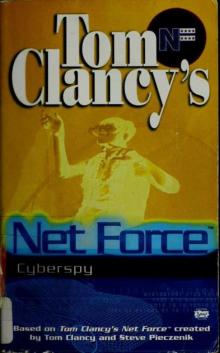 Cyberspy
Cyberspy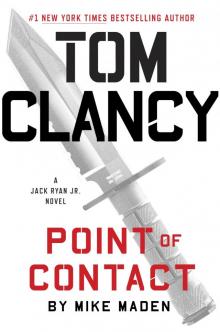 Point of Contact
Point of Contact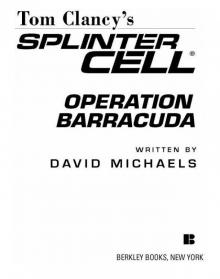 Operation Barracuda (2005)
Operation Barracuda (2005)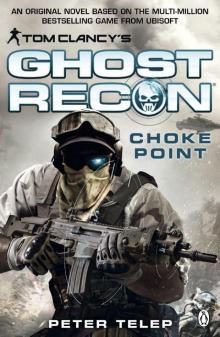 Choke Point
Choke Point Power and Empire
Power and Empire Every Man a Tiger: The Gulf War Air Campaign
Every Man a Tiger: The Gulf War Air Campaign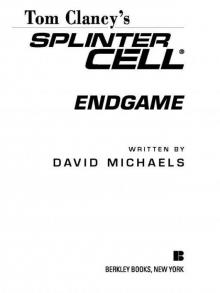 Endgame (1998)
Endgame (1998)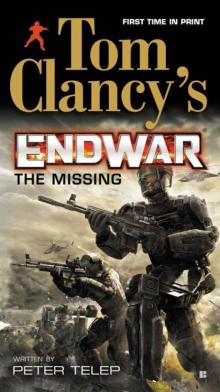 EndWar: The Missing
EndWar: The Missing Splinter Cell (2004)
Splinter Cell (2004) The Great Race
The Great Race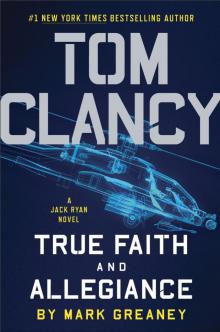 True Faith and Allegiance
True Faith and Allegiance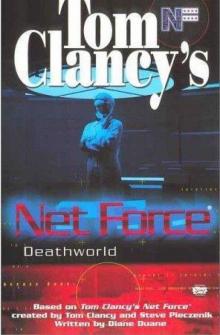 Deathworld
Deathworld Ghost Recon (2008)
Ghost Recon (2008)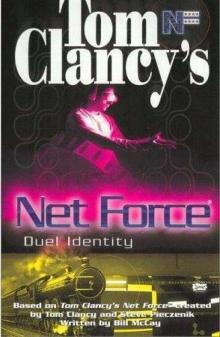 Duel Identity
Duel Identity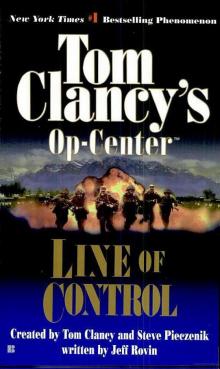 Line of Control o-8
Line of Control o-8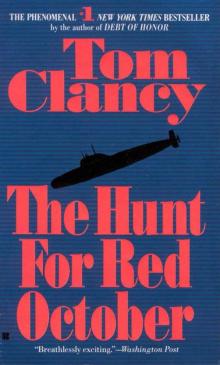 The Hunt for Red October jr-3
The Hunt for Red October jr-3 Hidden Agendas nf-2
Hidden Agendas nf-2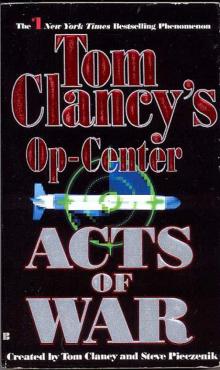 Acts of War oc-4
Acts of War oc-4 Ruthless.Com pp-2
Ruthless.Com pp-2 Night Moves
Night Moves The Hounds of Rome - Mystery of a Fugitive Priest
The Hounds of Rome - Mystery of a Fugitive Priest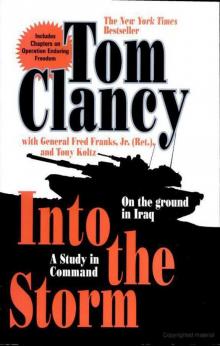 Into the Storm: On the Ground in Iraq sic-1
Into the Storm: On the Ground in Iraq sic-1 Threat Vector jrj-4
Threat Vector jrj-4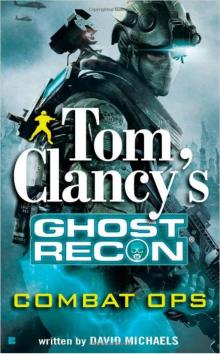 Combat Ops gr-2
Combat Ops gr-2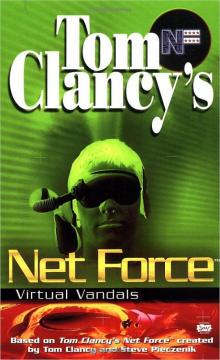 Virtual Vandals nfe-1
Virtual Vandals nfe-1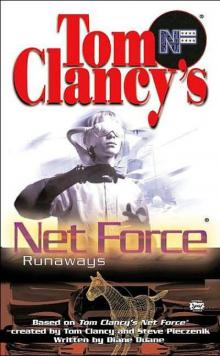 Runaways nfe-16
Runaways nfe-16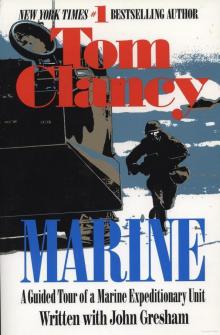 Marine: A Guided Tour of a Marine Expeditionary Unit tcml-4
Marine: A Guided Tour of a Marine Expeditionary Unit tcml-4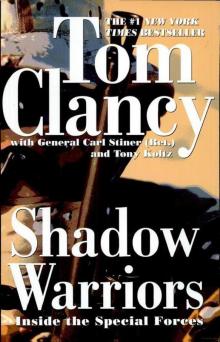 Shadow Warriors: Inside the Special Forces sic-3
Shadow Warriors: Inside the Special Forces sic-3 Jack Ryan Books 1-6
Jack Ryan Books 1-6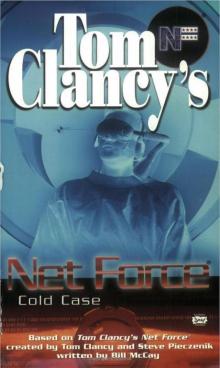 Cold Case nfe-15
Cold Case nfe-15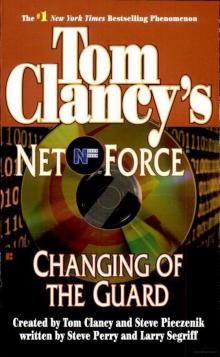 Changing of the Guard nf-8
Changing of the Guard nf-8 Splinter Cell sc-1
Splinter Cell sc-1 Battle Ready sic-4
Battle Ready sic-4 The Bear and the Dragon jrao-11
The Bear and the Dragon jrao-11 Fighter Wing: A Guided Tour of an Air Force Combat Wing tcml-3
Fighter Wing: A Guided Tour of an Air Force Combat Wing tcml-3 Patriot Games jr-1
Patriot Games jr-1 Jack Ryan Books 7-12
Jack Ryan Books 7-12 Mission of Honor o-9
Mission of Honor o-9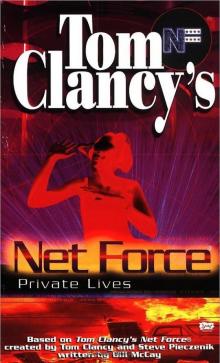 Private Lives nfe-9
Private Lives nfe-9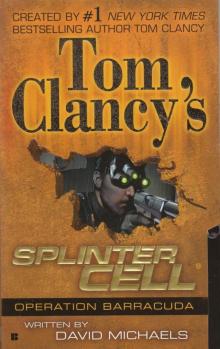 Operation Barracuda sc-2
Operation Barracuda sc-2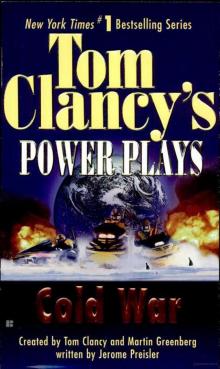 Cold War pp-5
Cold War pp-5 Point of Impact nf-5
Point of Impact nf-5 Red Rabbit jr-9
Red Rabbit jr-9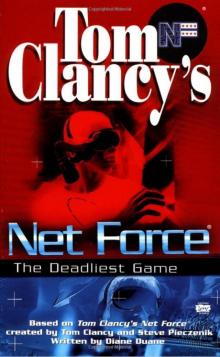 The Deadliest Game nfe-2
The Deadliest Game nfe-2 Springboard nf-9
Springboard nf-9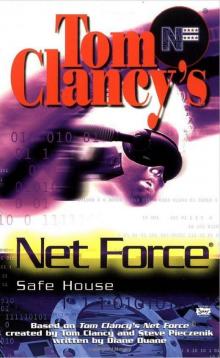 Safe House nfe-10
Safe House nfe-10 EndWar e-1
EndWar e-1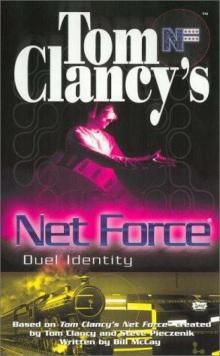 Duel Identity nfe-12
Duel Identity nfe-12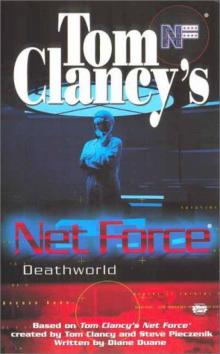 Deathworld nfe-13
Deathworld nfe-13 Politika pp-1
Politika pp-1 Rainbow Six jr-9
Rainbow Six jr-9 Tom Clancy's Power Plays 1 - 4
Tom Clancy's Power Plays 1 - 4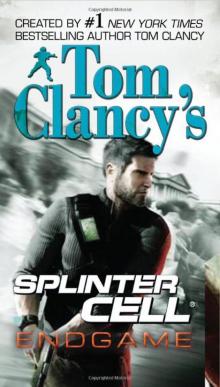 Endgame sc-6
Endgame sc-6 Executive Orders jr-7
Executive Orders jr-7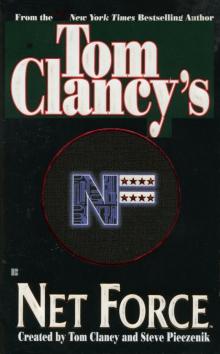 Net Force nf-1
Net Force nf-1 Call to Treason o-11
Call to Treason o-11 Locked On jrj-3
Locked On jrj-3 Against All Enemies
Against All Enemies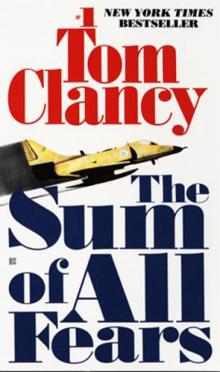 The Sum of All Fears jr-7
The Sum of All Fears jr-7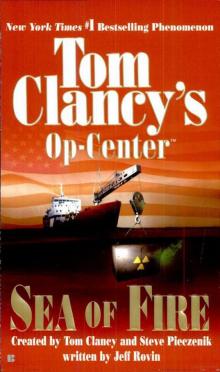 Sea of Fire o-10
Sea of Fire o-10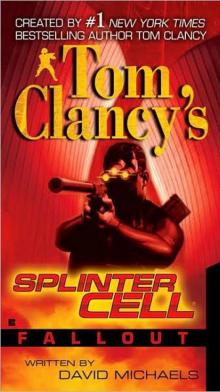 Fallout sc-4
Fallout sc-4 Balance of Power o-5
Balance of Power o-5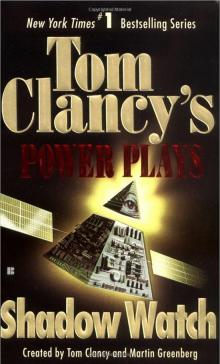 Shadow Watch pp-3
Shadow Watch pp-3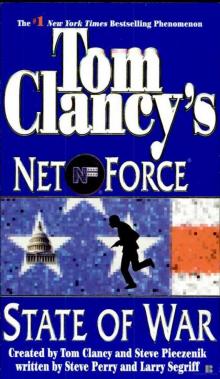 State of War nf-7
State of War nf-7 Wild Card pp-8
Wild Card pp-8 Games of State o-3
Games of State o-3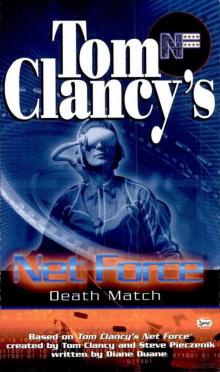 Death Match nfe-18
Death Match nfe-18 Against All Enemies mm-1
Against All Enemies mm-1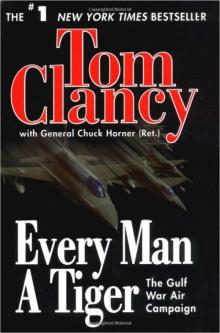 Every Man a Tiger: The Gulf War Air Campaign sic-2
Every Man a Tiger: The Gulf War Air Campaign sic-2 Cybernation nf-6
Cybernation nf-6 Support and Defend
Support and Defend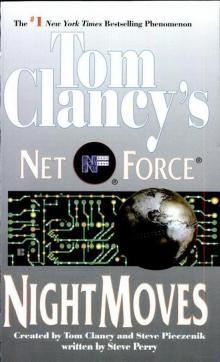 Night Moves nf-3
Night Moves nf-3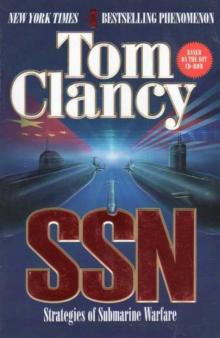 SSN
SSN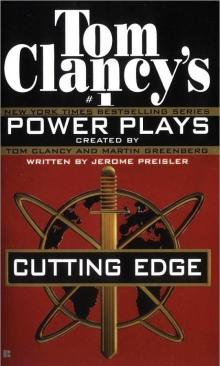 Cutting Edge pp-6
Cutting Edge pp-6 The Cardinal of the Kremlin jrao-5
The Cardinal of the Kremlin jrao-5 War of Eagles o-12
War of Eagles o-12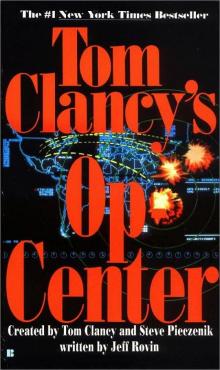 Op-Center o-1
Op-Center o-1 Mirror Image o-2
Mirror Image o-2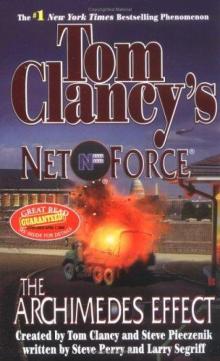 The Archimedes Effect nf-10
The Archimedes Effect nf-10 Teeth of the Tiger jrj-1
Teeth of the Tiger jrj-1 Bio-Strike pp-4
Bio-Strike pp-4 State of Siege o-6
State of Siege o-6 Debt of Honor jr-6
Debt of Honor jr-6 Zero Hour pp-7
Zero Hour pp-7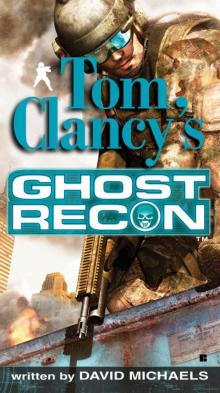 Ghost Recon gr-1
Ghost Recon gr-1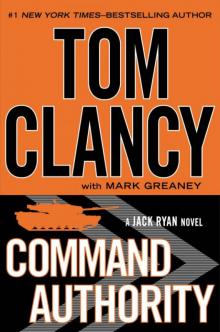 Command Authority jr-10
Command Authority jr-10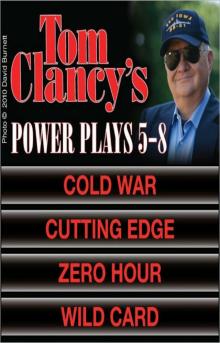 Tom Clancy's Power Plays 5 - 8
Tom Clancy's Power Plays 5 - 8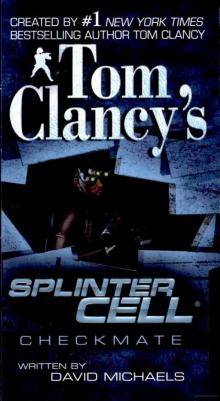 Checkmate sc-3
Checkmate sc-3 Breaking Point nf-4
Breaking Point nf-4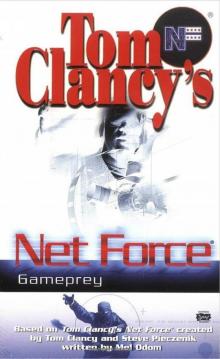 Gameprey nfe-11
Gameprey nfe-11 The Hunted e-2
The Hunted e-2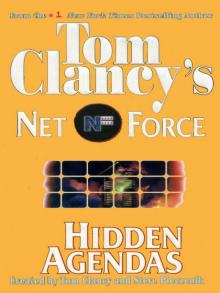 Hidden Agendas
Hidden Agendas Divide and Conquer o-7
Divide and Conquer o-7